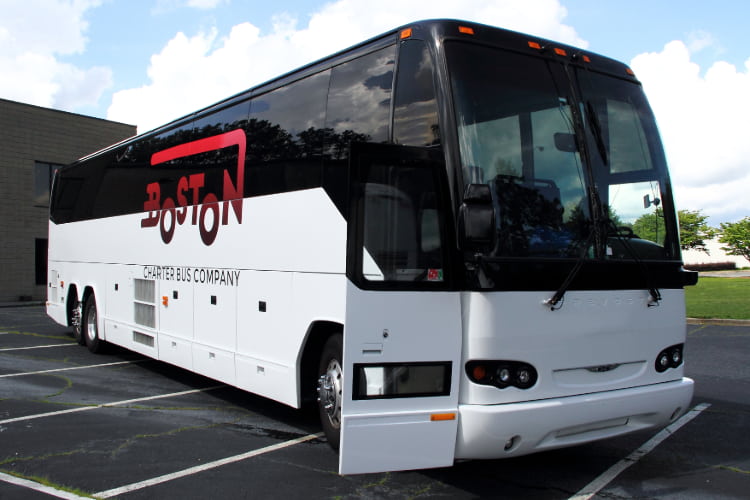20 Pro Tips For Deciding On Employee Shuttle Websites
20 Pro Tips For Deciding On Employee Shuttle Websites
Blog Article
Shuttle Transport For Employees Ten Tips For Choosing The Appropriate Vehicle And The Right Capacity
Here are 10 top tips on capacity and the best vehicle for shuttle services for employees:
1. Assess the needs of employees for transportation
Conduct a thorough assessment of your employees to figure out how many of them regularly use shuttle services. Think about factors such as the size of the employees, work shifts and peak times for usage. This information can be used to determine the best size of vehicle and the number of shuttles needed to be able to accommodate passengers.
2. Select the right type of vehicle
Select the vehicle best suited to your shuttle service based on how many employees you employ and what their needs are. Minibuses or vans are possible options. Minibuses that are able to maneuver through tighter spaces and are ideal for small groups, can be the ideal alternative. However larger buses are better suited for those who must transport a large number of people. Take into consideration the layout of the vehicle and if it offers adequate seating and space for luggage, especially if employees are traveling with bags or equipment.
3. Evaluate Fuel Efficiency
The cost of fuel can affect the overall budget for shuttle services. It is important to prioritize vehicles that have low consumption of fuel to cut expenses. Hybrid and electric vehicles should be considered as well, since they provide long-term savings as well as meet sustainability targets. It is essential to assess the efficiency of fuel consumption between different models so that you can make an informed decision which balances capacity and cost.
4. Consider Accessibility Features
Verify that vehicles are in compliance with accessibility standards to be able to accommodate employees with disabilities. This could include features like a wheelchair lift or low floor that makes access easier and a seating area for those who have mobility issues. Accessible transportation meets not only legal requirements, but also fosters the diversity of work.
5. Plan for Growth & Flexibility
As an organization grows, the size of its workforce may alter. Take into consideration the possibility of growth to come when selecting a vehicle. When choosing a vehicle, think about the potential for future growth.
6. Research Safety Ratings for Research and Features
Safety is a priority in the transport of employees. Check out the safety attributes and rating of vehicles before deciding which one to choose. Look for vehicles equipped with advanced safety technologies including stability control, anti-lock brakes and collision avoidance systems. Make sure that all safety standards are met by the vehicle, to ensure the safety of employees while traveling.
7. Maintaining and Reliability
Select cars that are well-known for their low-maintenance costs and reliability. A vehicle that needs frequent repairs could cause disruption to shuttle services or lead to employee frustration. Research the reliability ratings of different makes and models, and consider establishing the maintenance schedule that will keep vehicles in optimal state, which will extend their lifespan.
8. GPS as well as Fleet Management Software
Implementing GPS trackers as well as fleet-management software can increase the effectiveness of the shuttle service. These tools enable real-time tracking of vehicle locations, optimizing routes based on the weather conditions and schedules of employees. Furthermore, software for managing fleets can help track vehicle performance as well as fuel consumption and maintenance requirements, which will ensure that vehicles are being used effectively.
9. Employee Feedback Systems
Encourage your employees by using questionnaires or suggestion bins to give feedback on the comfort of your vehicle. Understanding their experience will help you identify issues with overcrowding as well as accessibility or seating issues. Reviewing this feedback regularly allows for the necessary adjustments in car selection as well as service adjustments.
10. Total Cost of Ownership How do you budget?
Consider the total cost to own (TCO) when deciding on a vehicle. This includes purchase price and fuel costs in addition to maintenance, insurance, and depreciation. TCO analysis allows you to make educated decisions that balance the initial cost with operational expenses over the long-term. It is possible to make educated decisions by weighing all the costs associated. This can help you choose a vehicle which meets your budgetary needs while also ensuring reliability and capacity.
With these suggestions businesses can choose the right vehicles and plan capacity for employee shuttle transportation providing a safe comfortable, efficient, and comfortable service that is able to meet the requirements of their workforce. Take a look at the recommended get more information about employee shuttle for more recommendations including shuttle service from the airport, dallas airport shuttle, shuttle for the airport, shuttle van, pick up service at airport, luxury transportation, lax airport shuttle service, los angeles airport car service, transportation for airport, dallas airport shuttle and more.
10 Tips To Help Determine The Budget And Costs Of Corporate Event Transportation Services
Here are 10 top suggestions on budget and cost for transportation services for events at corporate venues:
1. Conduct an Cost Analysis
Do a comprehensive cost-analysis of every aspect of the service. It includes costs for car leasing or rental as well as driver salary, fuel and expenses, insurance, maintenance and other fees such as parking or permits. Understanding the total price will allow you to create an affordable and realistic budget.
2. Set up a budget that is clear
Create a budget that clearly states the amount of money your business will and is able to allocate for transportation. The budget should contain every cost identified, and allow the flexibility to cover unexpected costs. Budgeting aids in making decisions and keeps transportation costs affordable.
3. Explore alternative transportation options
Consider the various transport options to attend your event. This could include vans, shuttles, or ride-sharing service. Analyze the costs for each option while weighing aspects like convenience and comfort. Transport budgets can be maximized by selecting the most cost-effective option that meets the attendees’ needs.
4. Dealing with Transportation Providers
When selecting transportation providers make sure you negotiate contracts to get the most affordable rates. A lot of transportation companies will offer discounts for corporate events, or bookings for large quantities. A positive relationship could result in better rates, better service, and, ultimately, a more affordable experience.
5. Plan your fuel costs
Be aware of the cost of fuel when calculating your budget. It can impact the cost of transportation dramatically. Consider the distance to the venue and the amount of trips planned. To save money consider negotiating with the transport company who uses for vehicles that are fuel efficient.
6. Include Contingency Funds
A portion of your budget to contingency funds to cover the unexpected expenses. Transportation is unpredictable and can result in problems like vehicle breakdowns or trips that aren't scheduled. You can deal with unpredictable situations with contingency money.
7. Packages and discounts for groups are available
Take a look at the package or group rates that are provided by your travel company. Many companies offer discounted rates for large corporate events or groups. These can be an enormous savings. Find out if there are any packages available that include discounted services like on-site coordinating or extra vehicles.
8. Keep track of your expenses and monitor them
Maintain a close watch on all transportation-related expenses throughout the planning and execution phases. Tools for budgeting and spreadsheets are a great way to keep track of costs in real-time. Examine expenses to discover areas where you can save.
9. Collect Feedback for Future Budgeting
After the event, you can ask participants to share their feedback about their experiences with transportation and the associated expenses. The feedback you collect can be used to determine the effectiveness of the transport service and aid future budgetary decisions. Understanding the factors that work and those that don't perform will allow you to refine the event budget.
10. Calculate the Total Cost of Ownership
Examine the total cost of ownership (TCO) that comprises both the rental or purchase price and ongoing expenses like maintenance insurance, depreciation, and maintenance. This includes the cost of rental or purchase, as well as ongoing expenses like maintenance, insurance, depreciation and insurance. Knowing TCO lets you make informed choices by taking into consideration the initial cost and the long-term financial consequences.
Follow these tips to effectively control costs and make informed choices about the transportation of corporate events. While ensuring transportation requirements are met A well-planned budget can contribute to the overall success of the event by giving guests the ability to focus on the experience rather than logistics issues. The image of the company is improved with a well-planned budget, and the cost management is a sign of its commitment to effectiveness and responsible behavior. Take a look at the recommended event transportation examples for site recommendations including services and logistics, pace transportation service, global logistics co, transport comp, transportation companies, transport planning, mgt logistics, pace transportation service, best transport, trailering services and more.